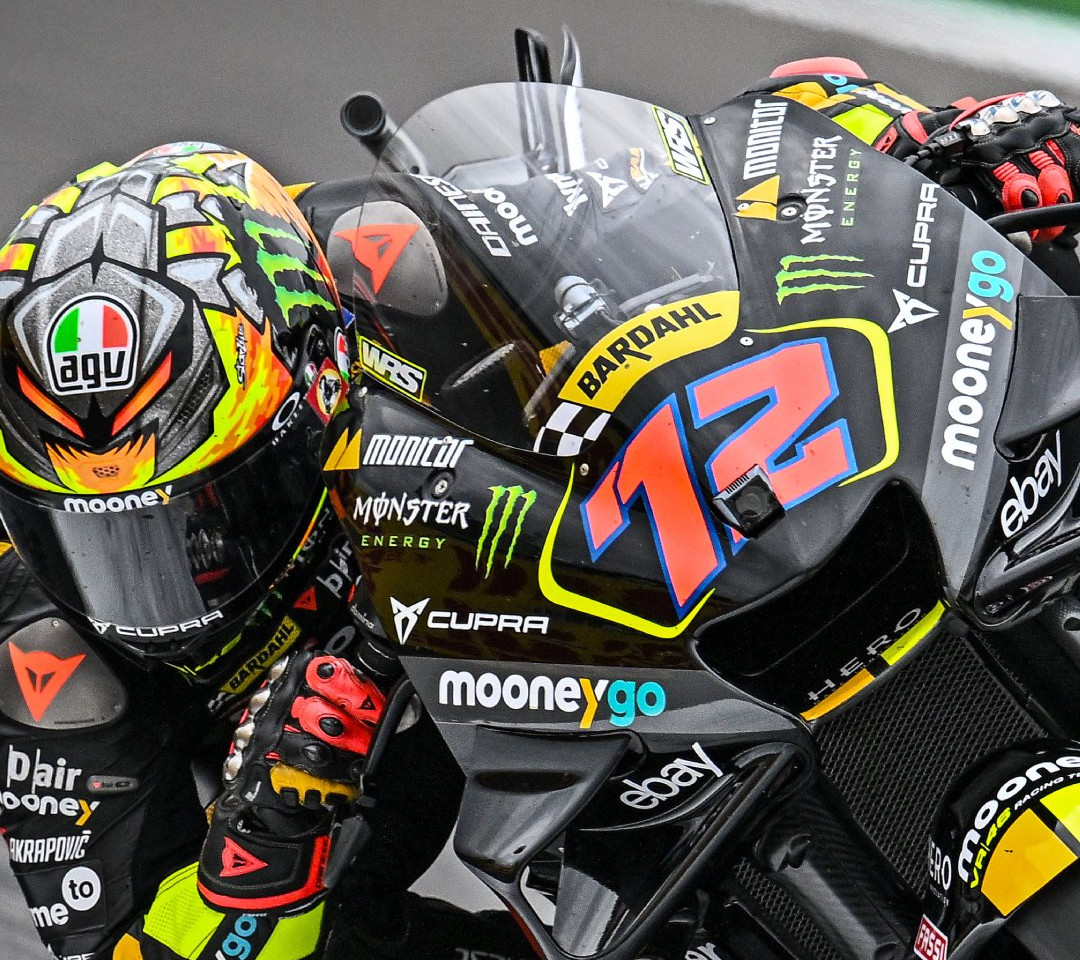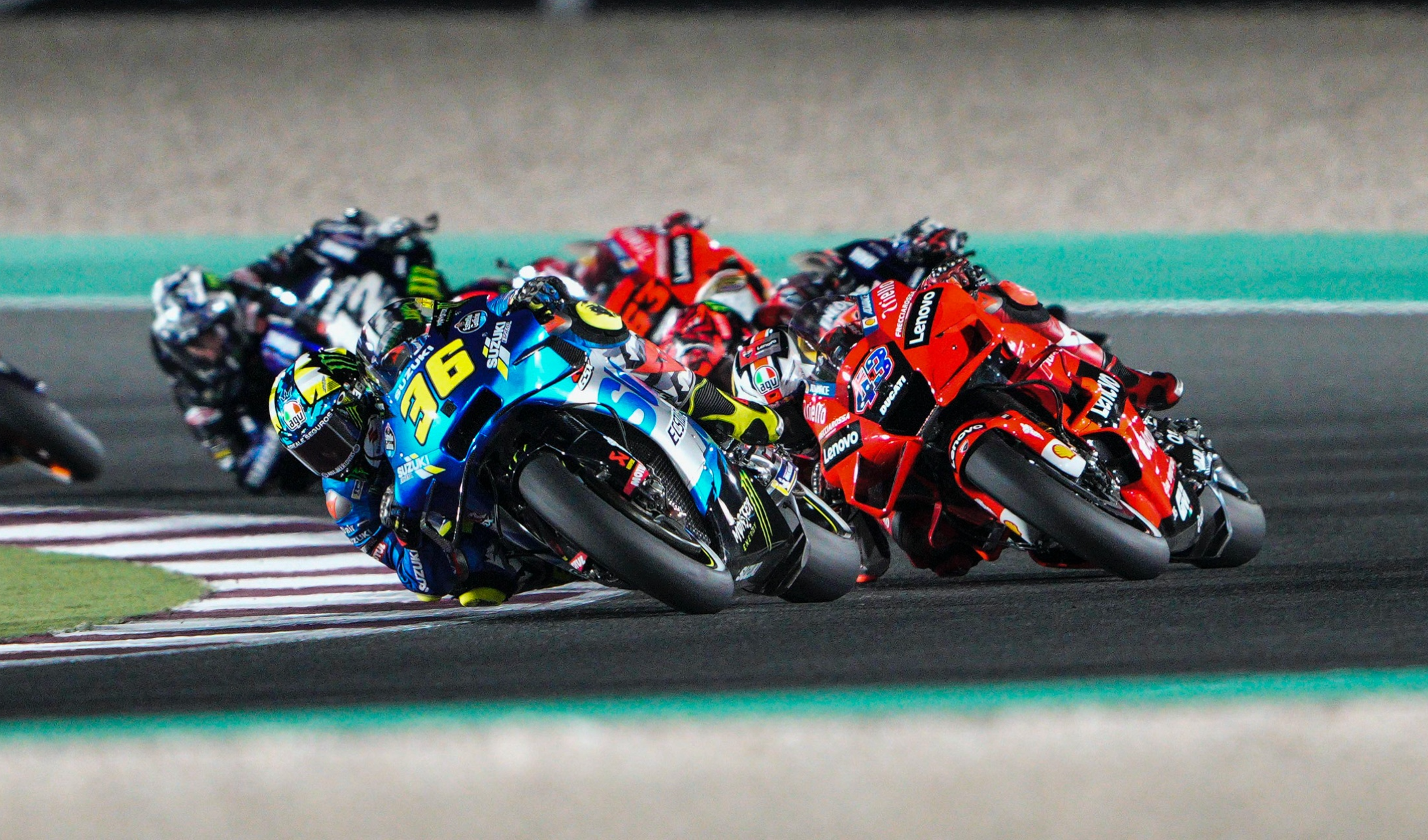During a typical summer’s day at the British Grand Prix, the rain poured at Silverstone for our first qualifying after the summer break. The conditions were difficult to master, with many riders falling, but one man was able to secure pole.
Marco Bezzecchi mastered the awful conditions on track today to bring his bike home in pole – his second consecutive pole position. However, his bike wasn’t unscathed. Bezzecchi went down in the dying minutes of Q2 whilst trying to improve on his time. His bike looked very much like it was ready for the scrap heap as the Italian rider walked to parc ferme. He will be joined on the front row by Jack Miller and Alex Marquez who also mastered the conditions.
As It Happens
Qualifying 1
The first rider to fall victim to the conditions was Fabio DiGiantonio. He faced a highside going into Abbey corner with 9 minutes remaining on the clock. It was a disappointing early end to the session for the rider was was fastest in practice and was sitting at the top of the timing sheets so far in qualifying.
A few minutes later, Fabio Quartararo aquaplanes at turn 16 – he is able to keep the bike upright and gets it going again to rejoin the session.
Franco Morbidelli is next to top the timing sheets and continues to beat his own time on his way to a Q2 spot.
Enea Bastianini was looking set to join Morbidelli in Q2, sitting comfortably in 2nd for much of the session. However, he was bested by Augusto Fernandez in the dying moments, as the Spanish rider set a 2:16.885.
It was a hugely difficult day for Quartararo who wasn’t able to find his rhythm again after the mid-session incident. He will start both of this weekend’s races from the back of the grid.
Qualifying 2
The first rider to top the timing sheets was Jack Miller who set a blistering lap time of 2:15.629 – it seemed to come out of nowhere as the Aussie left everything on the track whilst others were tip-toeing around.
With 6 and a half minutes left on the clock, Pecco Bagnaia had a fast crash after locking the breaks. He went down at turn 6 and despite hitching a lift on a moped, he wasn’t able to get back to the garage with enough time to get back on track for a hot lap. Luckily for the reigning champion, he had already laid down a fast lap and will still the race from 4th.
With the rain continuing to pour, more and more riders were falling, with turn 1 looking especially tricky. That included Alex Marquez and Luca Marini. The multiple yellow flags that were out for the final 3 minutes meant that no riders were able to improve on their lap times.
The final rider to fall in qualifying was provisional pole sitter, Marco Bezzecchi. His bike ended up looking like scrap but, again due to the resulting yellow flags, no one was able to beat his pole lap time of 2:15.359.
Feature Image Credit: Mooney VR46 on Twitter

